
Vinayaka worship can be traced to the time of Muruga when people admired the way his royal elephant "PiNi Mukham" was an inseparable companion, helping him in everything including winning the love of Valli.
My blog jayasreesaranathan.blogspot.com/2020/10/tracin…
Watch the video
+
My blog jayasreesaranathan.blogspot.com/2020/10/tracin…
Watch the video
+
The elephant connection to Muruga is found in Sangam texts of women visiting Muruga’s temple doing ‘puja’ to the elephant of the temple treating it as the elephant of Muruga. Only women did this puja by smearing kumkum on the head, face and trunk of the elephant
+
+
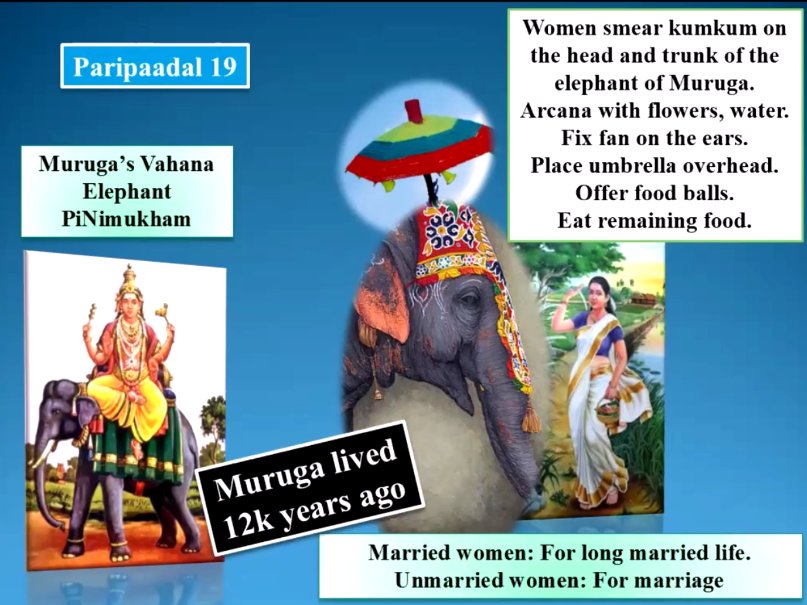
So we find a connection between Vinayaka in red (auspicious) in his marriage with Siddhi (Siddhi Vinayaka) and Mars the planet having Muruga as the lord becoming a signifactor for Mangal – which in ordinary parlance we relate with Mangalyam! + 
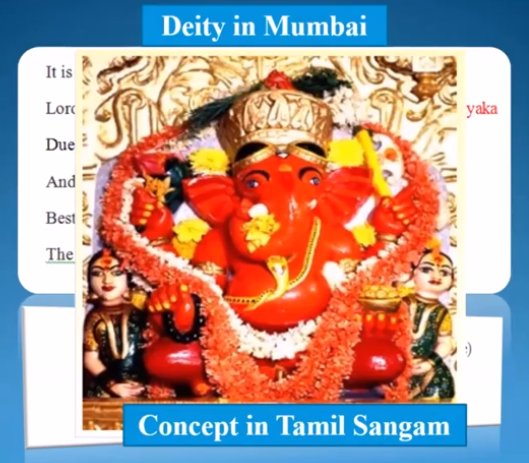
Since the elephant of Muruga had facilitated the fructification of marriage of Muruga with Valli & a happy married life thereafter, elephant worship in temples of Muruga started initially. Must have been in vogue right from the time the time of Muruga, who lived 12,000 years ago+
Since elephant was found in plenty in Kurinji lands, keeping elephant in the temples of Muruga must hve been an oldest practice which spread to other temples in course of time. The upkeep of many elephants in temples of Kerala even today must have been a remnant of this practice+
The elephant of Muruga being very dear to Muruga, came to be regarded as the elder brother of Muruga and in due course depicted as a deity with elephant face.The worship of elephant in olden Tamil lands must have given rise to the name “Pillaiyar”. Pillai means child or son.+
Like a little son the elephant is mischievous, fat and fond of eating. Even today we have the practice of offering food (fruits mostly) to temple elephants and receive its blessings by the placing of its trunk on our head. +
Food balls offered to the elephant in Sangam age had become the ‘Modak’ or ‘Kozhukattai’ made of rice. The iconography of Pillaiyar must have evolved from this.
Umbrella placed on its head continues to be customary in temples of Kerala & in Vinayakar Chaturti Puja we do at home+
Umbrella placed on its head continues to be customary in temples of Kerala & in Vinayakar Chaturti Puja we do at home+
This practice absent in other regions but compulsory in Tamil lands clearly indicates a long standing practice from the Sangam age of worshiping the elephant of Muruga, regarded as the elder brother Muruga in his temples.
+
+
There is an opinion that Vinayaka Puja was made widespread only following Tilak’s efforts. No. The Journal of Literature & Science published by the British before the birth of Tilak refers to Vinayaka Caturthi festival in Madras as it is celebrated today.+ @Indumakalktchi
Note the name ‘Vinayaka’ – it was not Ganesha! This is the only festival when the deity made of clay is freshly bought for the festival and immersed later. The only difference between then and now is that people avoided looking at the moon on that night under the belief that +
they would be falsely accused if they looked at the moon. The Journal continues to say that Krishna was accused because he looked at the moon on Vianyaka Cathurti day!
So the celebration of Vinayaka Cathurti had been in vogue since Krishna’s times! + @annamalai_k @BJPtamilagam
So the celebration of Vinayaka Cathurti had been in vogue since Krishna’s times! + @annamalai_k @BJPtamilagam
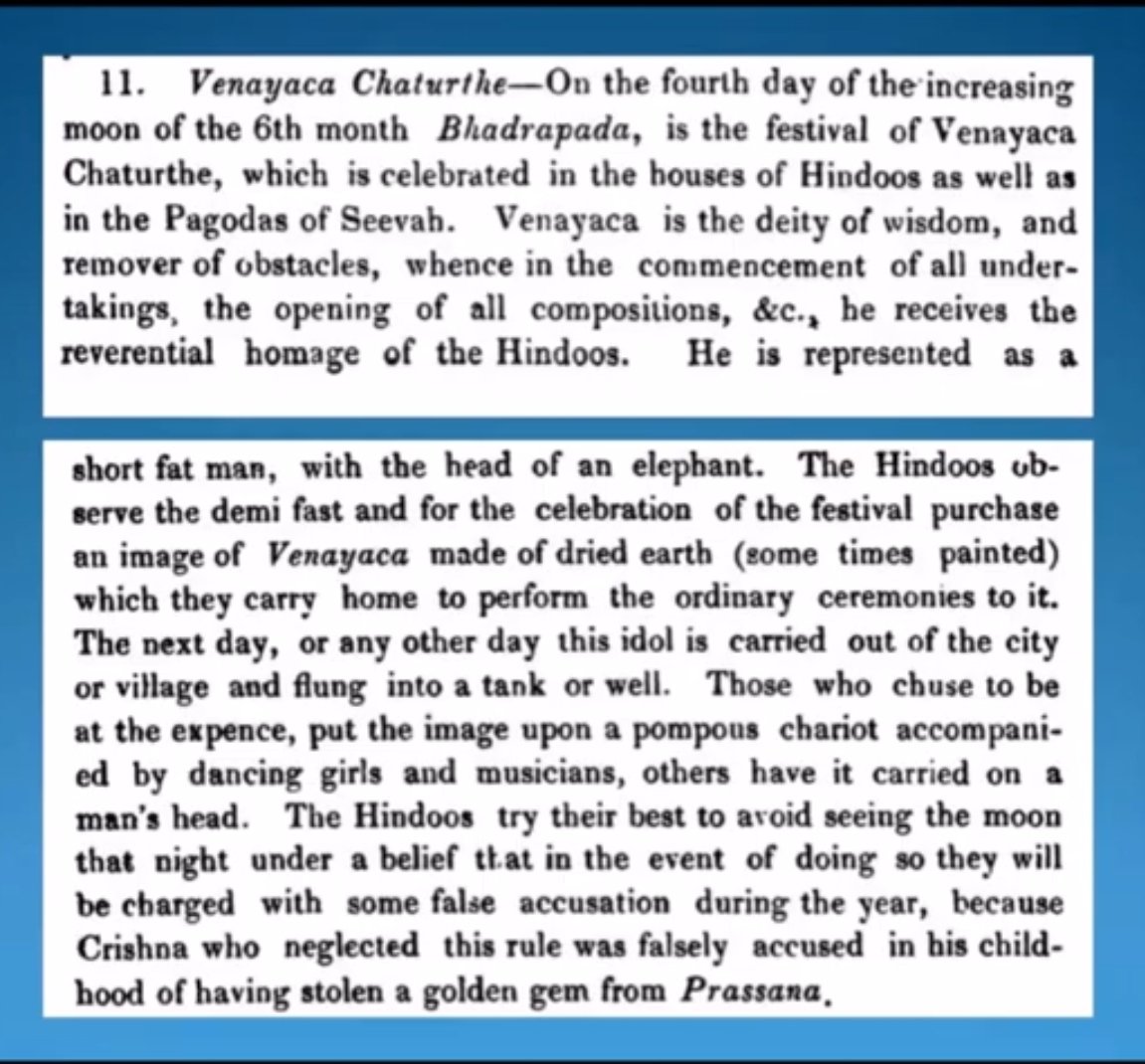
It was so even from Rama’s times V Ramayana says ‘Vinayaka’ & similar deity would stay fixated in the houses of those who recited Ramayana!
Vinayaka worship is a household worship aimed at getting auspiciousness,while worship of Muruga is a temple festival as with Skanda Shashti+
Vinayaka worship is a household worship aimed at getting auspiciousness,while worship of Muruga is a temple festival as with Skanda Shashti+
With the beginnings coming from Tamil Sangam age for Vinayaka worship, we find a change in concept in Puranas that refer to ‘Ganesha”. Ganesha means ‘the lord or commander of Ganas of Shiva’. Though there are many stories of origin of Ganesha, +
a particular one found in Vayu Purana talks about short and stout Ganas, the attendants of Shiva and Parvati.
Once when king Divodasa was ruling from Kashi, Shiva wanted occupy Kashi. He asked Ganesha also known as Nikumbha to facilitate his entry into Kashi.+
@narendramodi
Once when king Divodasa was ruling from Kashi, Shiva wanted occupy Kashi. He asked Ganesha also known as Nikumbha to facilitate his entry into Kashi.+
@narendramodi
Nikumbha appeared in the dream of a barber asking him to install him outside the city and do the worship. People started coming to Nikumbha for boons and Nikumbha gratified all. When Divodasa himself came to him seeking boon for getting progeny, Nikumbha didn’t oblige.+
This infuriated Divodasa to abuse him which resulted in Nikumbha to curse him to leave the city. It happened so, following which Shiva entered and occupied the city.The concept of Gana and Ganesha appears from then onwards.+
One can see a number of ganas including the elephant faced Ganesha - all short and stout and mischievous – under the panel of Shiva- Parvati in temples. One can see Veerabhadra at one end and Ganesh at the other end with sapta mata in between.+
Normally Muruga is associated with sapta mata-s that was explained in one of my videos. Mother goddess, Muruga and Ganesha had evolved together as Shaktam, Skandam and Ganapatyam. In these forms, shamanism and Tantricism were chief causes for worship. 

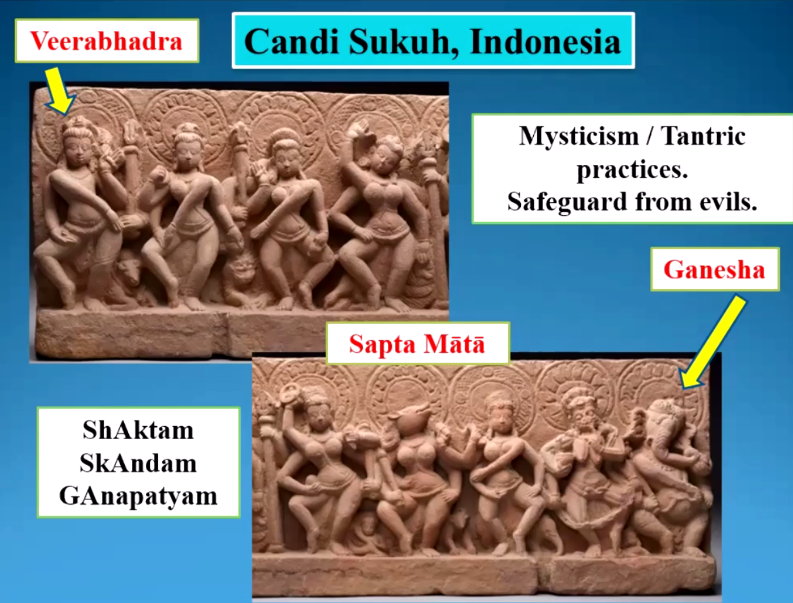
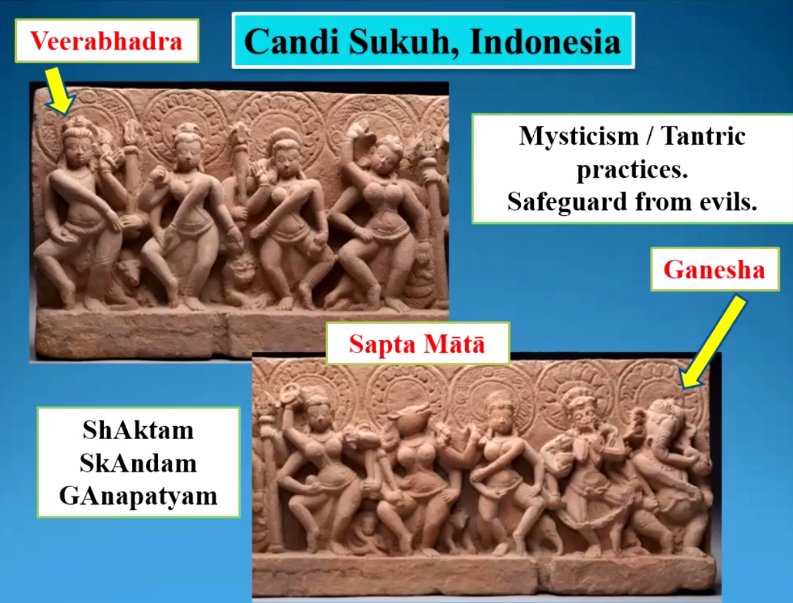
Many of the strange forms of Ganesh found in other parts of Asia including the one in Angkor Wat were indicative of tantric practices associated with Ganesha worship.A relic of it is still in vogue with us in breaking coconuts for Ganesha. The chief aim was to derive out evil + 
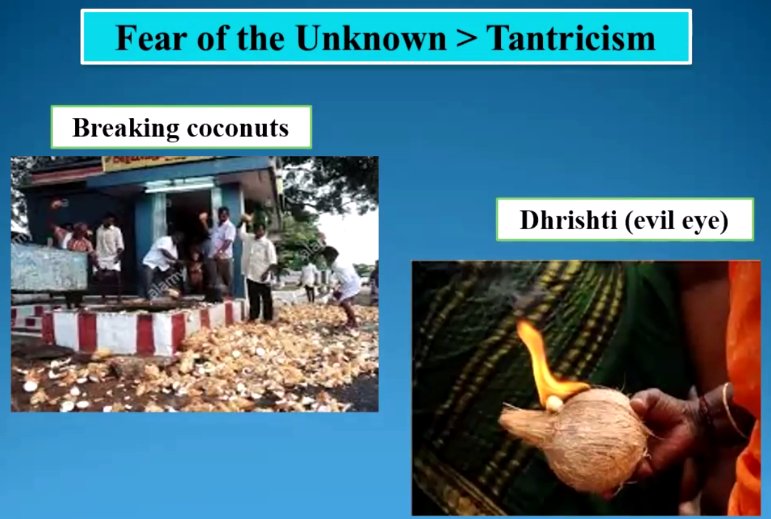
Tantric practices associated with Ganesha at its peak till 12th cen thru out India promoted by Kāpālikas, Kālāmukhas,Paśupatas -all heretic sects. In contrast Tamil Pillaiyar or Vinayaka (supreme leader) was auspicious, confined within one’s home or as elephant worship in temple+
Till 2K yrs ago this was so-Sangam age practice. After that the first appearance of Pillaiyar in iconography seen in 6th cen in Pillaiyar patti. The sculptor was ‘Erukkaattoor Perum Thacchan’-erukku in this name signifying the special flower Erukku that is used only for Vinayaka+ 
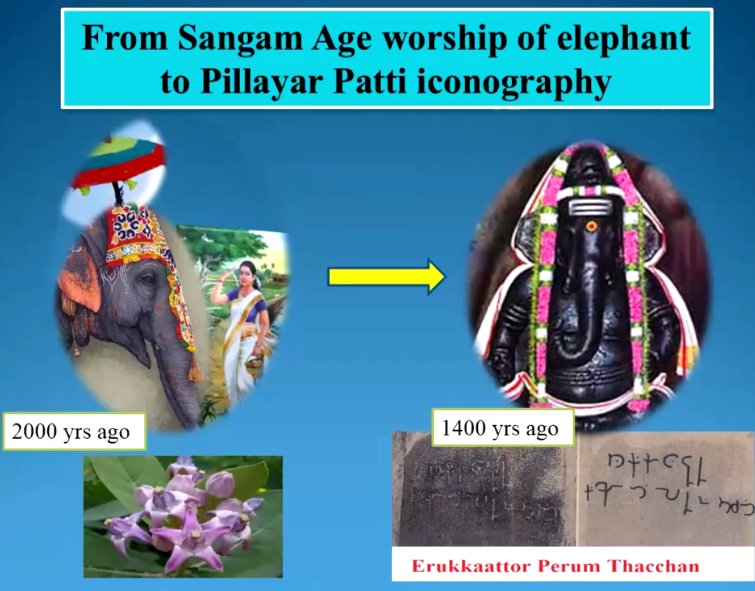
even today in Tamil lands. There are Tamil verses in Sangam text of worship by using Erukku flower. Indication of worship of Pillaiyar – the elephant or an image of the elephant. It changed over to the current form in the Common Era.
jayasreesaranathan.blogspot.com/2020/10/tracin… +
@Indumakalktchi
jayasreesaranathan.blogspot.com/2020/10/tracin… +
@Indumakalktchi
Pillaiyar is installed wherever there are certain trees such as peepal (arasa maram), water way, and anthill where snakes reside. These are the places the hero of the Sangam had to cross to come to meet his lady love. The heroine would be worried about his safety+
through these troubles. We don’t know what deity she worshiped, but seeing the presence of Pillaiyar in these places, it sounds logical that she had prayed to the elephant of Muruga – Pillaiyar to safeguard the hero and help in the success of their love affair. +
In due course wherever water ways were there, Vinayaka was installed, partly to safeguard the water ways from pollution and partly to protect the trees and anthills that served as markers to identify underground water ways. +
@annamalai_k
@annamalai_k
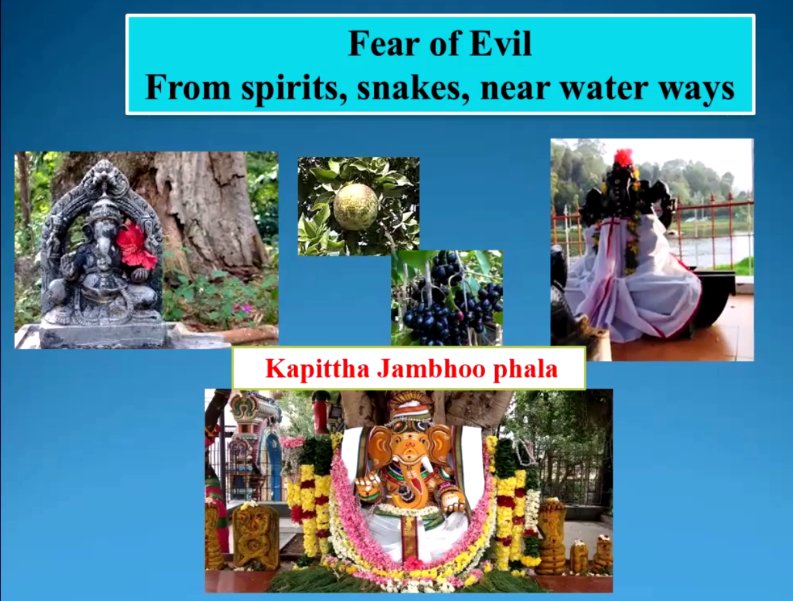
In this way numerous Pillaiyars came up all over TN. Worship of a deity is related to the boons associated with that deity. Pillaiyar is for auspiciousness, removing obstacles, protection from evils. All these needed for every1 at all times. So Pillaiyar has a wide following.+
So the popularity of a God lies in what we gain from him, I may sound clumsy, but it is true. Pillaiyar worship is popular because of the benefits supposed to be granted by him. Also there are no great rules in consecrating him. +
jayasreesaranathan.blogspot.com/2020/10/tracin…
jayasreesaranathan.blogspot.com/2020/10/tracin…
Just a lump of clay or mud or turmeric is enough to consecrate him anywhere. His power doesn’t diminish because of this. For this reason Ganesha temples are more in number compared to any other deity all over India!


• • •
Missing some Tweet in this thread? You can try to
force a refresh




